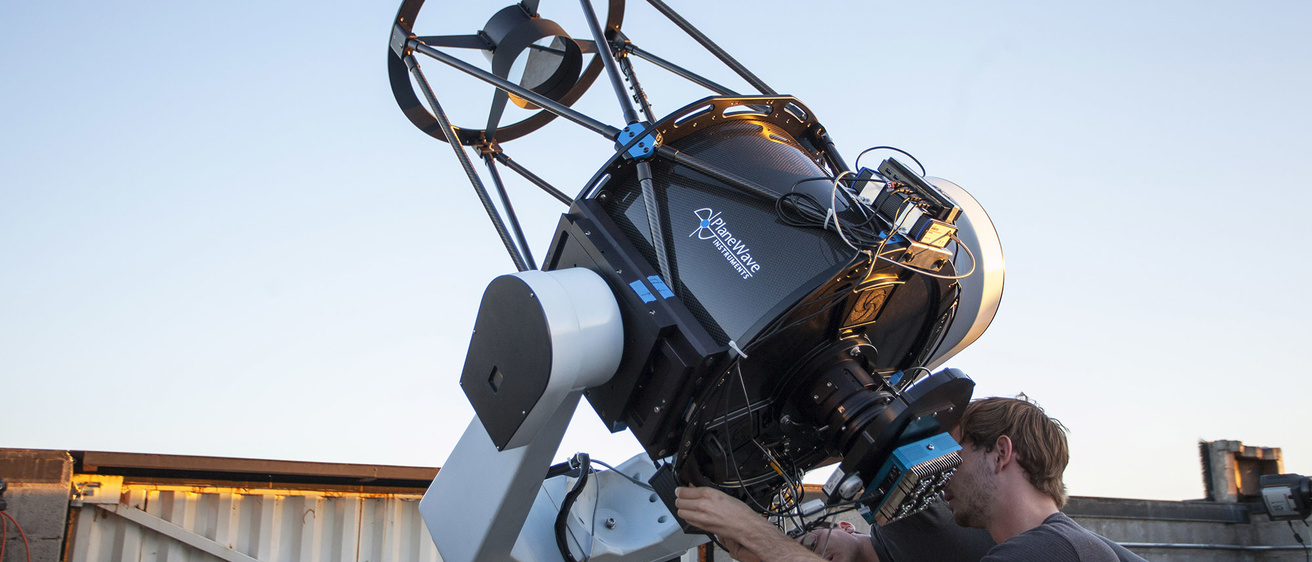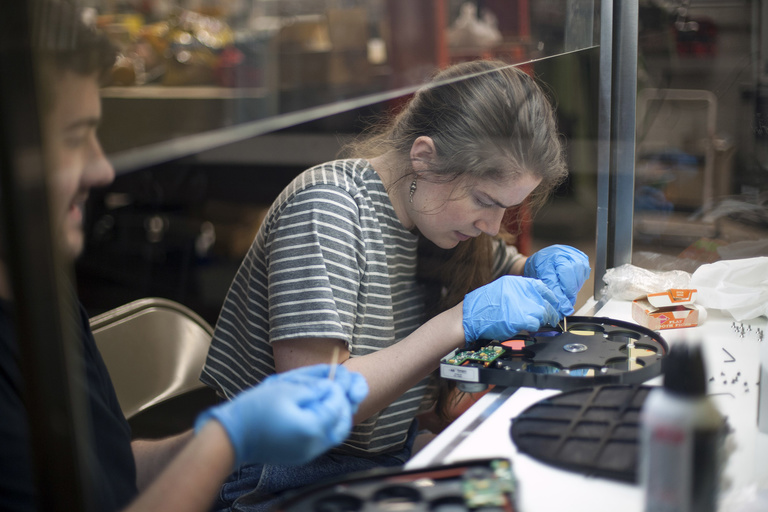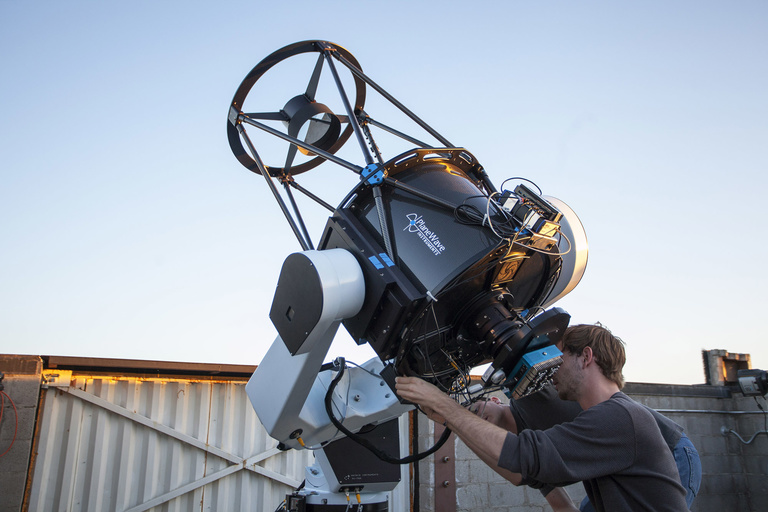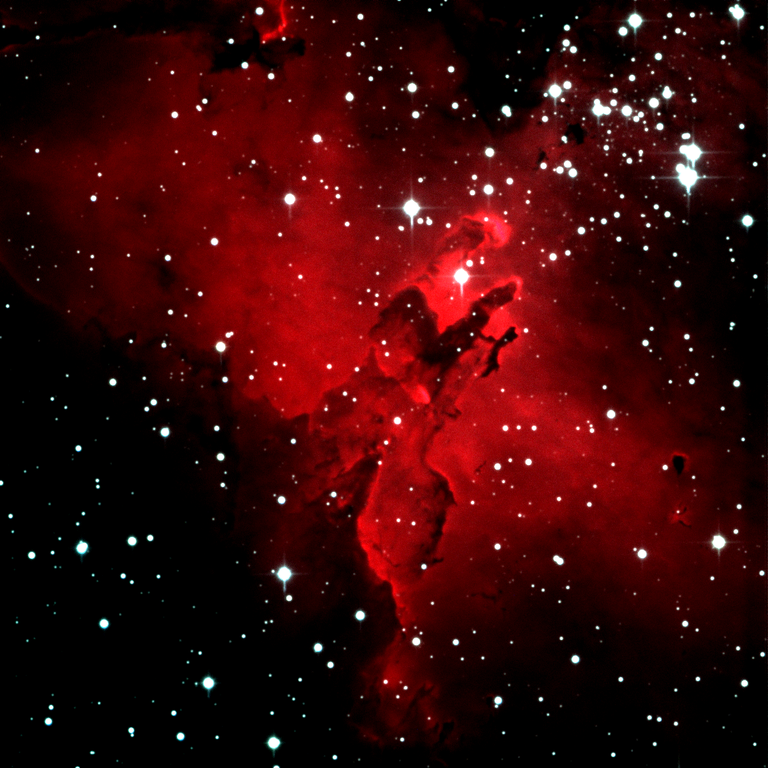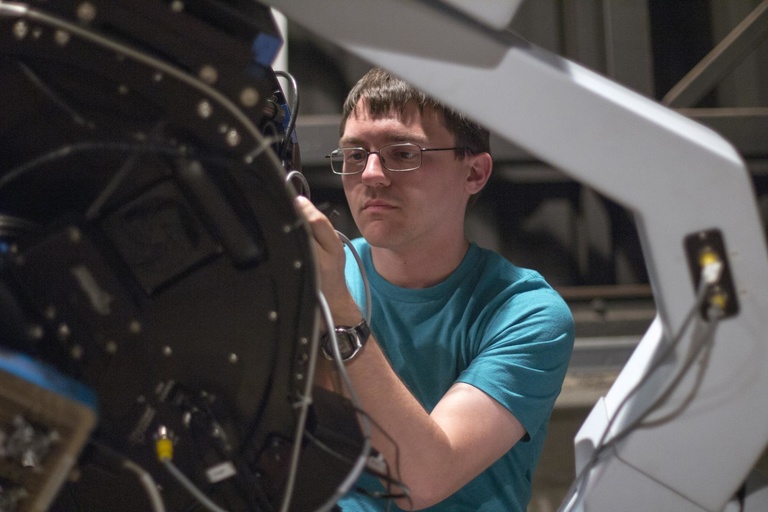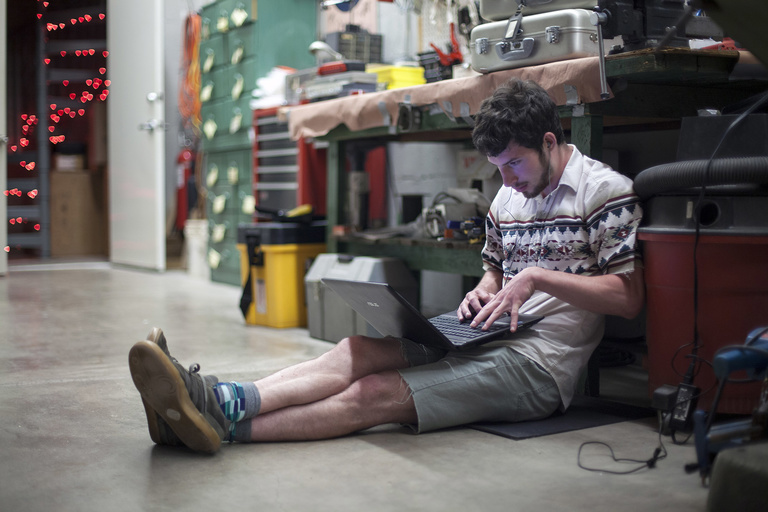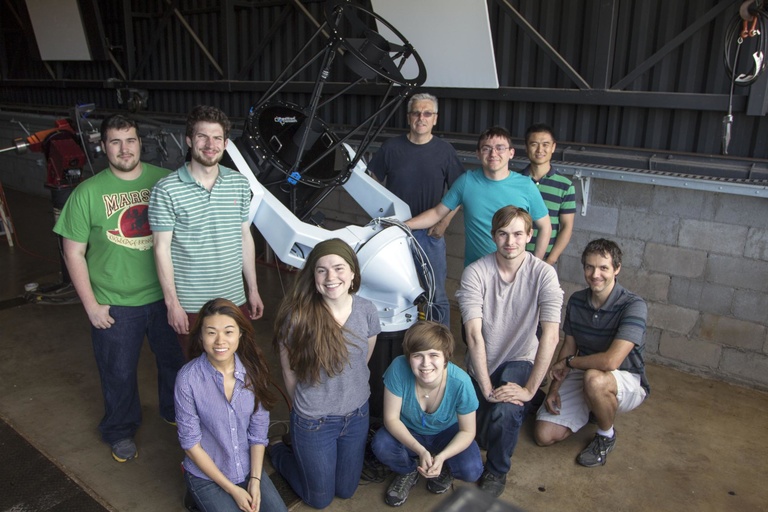For physics and astronomy students, seeing the stars and planets in the universe is a crucial component of their education. A group of undergraduates at the University of Iowa recently built their own telescope that can be operated remotely and will serve UI students for years to come.
The telescope that sits on top of the physics and astronomy building, Van Allen Hall, is part of what motivated six undergraduate students to travel to Winer Observatory in Arizona to build and commission a state-of-the-art telescope for themselves—and future generations of Hawkeyes—to get a better glimpse of the galaxies.
This year, it just so happened that the UI needed to replace its telescope at Winer in order to be compatible with a new telescope the university had recently installed on top of Van Allen Hall. After receiving a $125,000 grant from the Roy J. Carver Charitable Trust to complete the project, astronomy and physics professor Robert Mutel started looking for the right group of students for the job.
“Helping students find their passion is what I live for,” Mutel says. “It’s the best part of being a professor.”
It’s something of a UI tradition. In 2002, Mutel assembled a similar group to travel to Winer to commission the university’s previous remote telescope. It was a huge success: five of those six students went on to get their doctoral degrees in physics or astronomy. Every year, Mutel and his fellow faculty members keep their eyes out for promising, passionate students and help guide them toward a track of research and graduate school.
After spending two years at Iowa State University as a political science and French major, Sophie Deam shot for the moon. She transferred to the University of Iowa, stuck with French, and, despite feeling shaky about her science skills, decided to pursue a passion in physics and astronomy, instead of political science.
“It was the best decision,” Deam says. “There’s so much knowledge available about the universe, and it felt like a waste not to take advantage of it. I wanted to know.”
Deam met Mutel early on in General Astronomy I. The professor picked up on Deam’s love of star science, and he asked her to take part in the project. “I felt very lucky,” she says.
Along with Deam, Mutel chose Wyatt Bettis, Mary Feng, Erin Maier, Bryan Prather-Huff, and Tyler Stercula to go on the trip. Each of the students displayed a different quality or passion that Mutel thought would benefit the group.
Prather-Huff, for example, is a computer science major with an interest in astronomy. His coding and hardware skills would go a long way to helping all the telescope’s parts work together.
“I like the idea that, as undergrads, we get to step in and figure out how to use this equipment, and how we can make it easier for our peers to access,” Prather-Huff says.
The project started at the beginning of the spring 2015 semester, when Mutel split his six students into pairs, assigning them to research and develop different aspects of the telescope. From the filter wheel to the spectrometer, the students tested and chose between numerous component models to build the best product.
In May, Mutel, the six undergraduate students, graduate student supervisor Dominic Ludovici, and physics and astronomy assistant professor Hai Fu traveled to Winer to find boxes of their new telescope lying on the floor of the large observatory. The group spent the week assembling—and occasionally troubleshooting—the new Gemini telescope. The students also had the benefit of being guided by a UI alum, Kevin Ivarsen, a former student of Mutel’s who is also an engineer with Planewave Instruments, the company that provided the telescope parts.
With a larger primary mirror, more efficient camera, and more astronomical filters than its predecessor, the new Gemini telescope enables students to take higher quality images and make more precise observations than they were before.
It was an exciting prospect, the students say. After the telescope was assembled, Stercula and Maier even stayed up through the night taking photographs, something they say was well worth the lost sleep.
“It was really fun and interesting, too, just to have created a final project together. It started in boxes and was a completed telescope when we left,” Stercula says.
The trip itself has helped to solidify many of the students’ interest in physics and astronomy. This summer, Maier will be studying turbulence in spiral galaxies through a Research Experience for Undergraduates (REU) at Northern Arizona University. Stercula and Deam will be conducting research through radio astronomy under the direction of Mutel. Feng will be participating in an REU at the University of Massachusetts Amherst. Bettis is conducting research with the mathematics department, and Prather-Huff is continuing on with a job at Information Technology Services at the UI.
Stercula says the entire experience is helping him move through his academic career with energy and motivation. He’s already planning to get a Ph.D. in astronomy.
“I wasn’t expecting this at all when I came to Iowa,” Stercula says. “It was really nice to have someone pick me out of the crowd. It shows that hard work really does pay off.”
